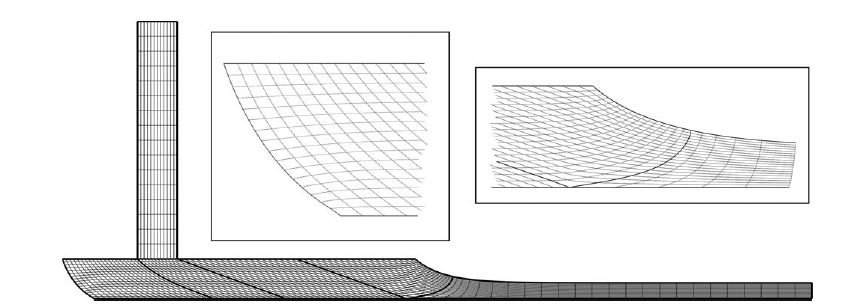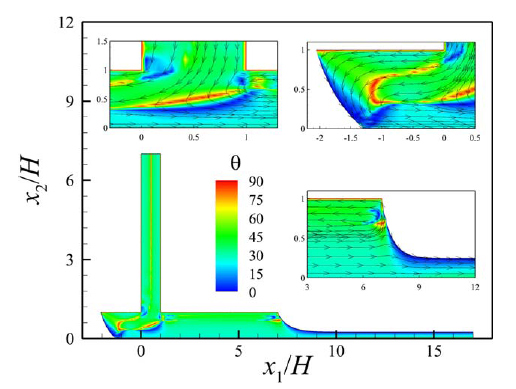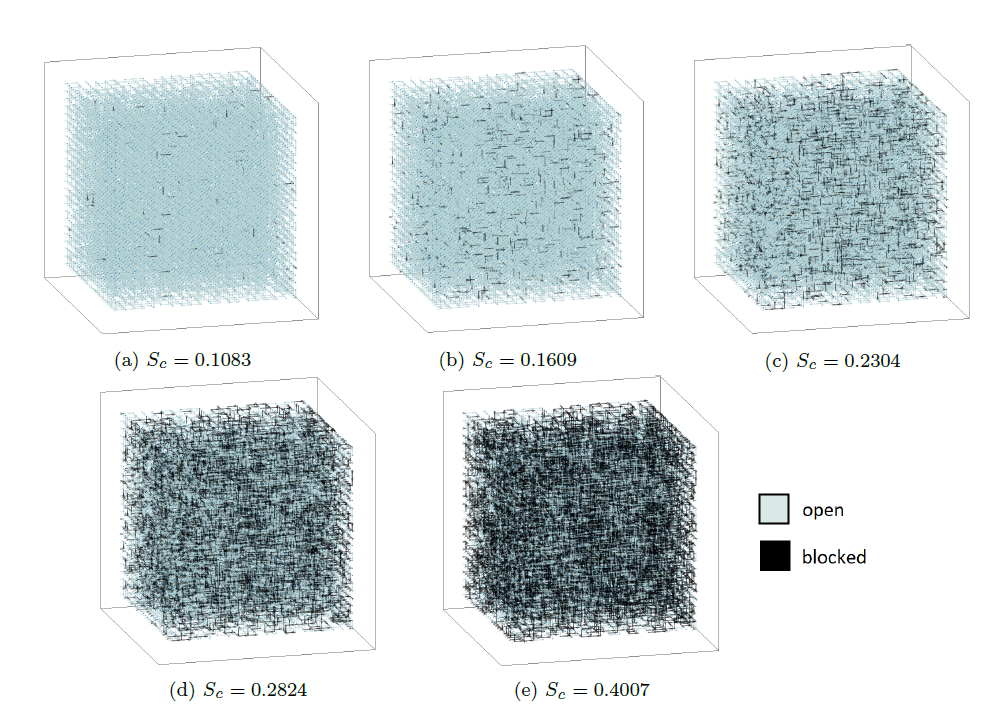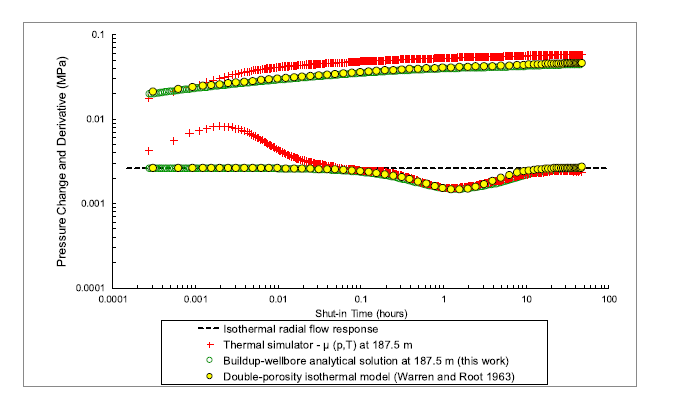As in many areas of science and technology, the use of computational mathematics and numerical algorithms has become an important part of modern coating technology development and other applications involving micro-scale free surface flows such as complex liquid two-phase flow in porous media.
With the more complex product structure and increasing competitive pressures, refinements in coating technology rely more and more on fully understanding the physical mechanisms involved in the process and that will determine its success or failure. The most critical step of a coating process is the flow in the region where the liquid is deposited on the substrate. This region is the coating bead. Its steady states and their stability to disturbances and upsets are crucial. In the same way, the complete understanding of the two-phase oil-water flow in porous media, emulsion formation during oil production and other multiphase flows are crucial for better design of different processes in the oil industries.
Research on these free surface flows is challenging. The dimensions of the coating bead and porous space is in the order of a few micrometers and it is usually bounded by liquid-air interfaces (and liquid-liquid interfaces) with large radius of curvature, that make capillary effects very important.
Theoretical analysis demands computer-aided solutions of the governing equations, which are strongly nonlinear due to the capillarity in free surfaces, inertia if it is appreciable, and non-Newtonian behavior, which is often present. Analysis can be further complicated by elastohydrodynamic effects of compliant confining surfaces. Stability of steady-state solutions, elastohydrodynamic effects, and the consequences of non-Newtonian liquid behavior are three areas least well examined, much less least well understood in scientific terms.
The goal of our research is to develop computational methods to analyze the steady state and stability of microscale free surface flows bounded by rigid and resilient boundaries. The equation systems for steady flows, for their stability, and for their transient evolution are solved by Galerkin’s method and extensions of it together with finite element basis functions, Newton’s method, and continuation strategies. Because of the free surface, the flow domain is unknown a priori. Capillary forces are comparable to viscous forces in coating and pore-scale two-phase flows; fully coupled solution methods – the position of the interface and the flow solution are computed simultaneously – are superior to fixed-point iterative method where the domain shape and the flow are computed alternatively. Fully coupled methods rely on mapping the unknown physical domain into a known reference domain by means of a bijective mapping that connects the physical and reference domains. The linear stability analysis of the flows leads to a large non-symmetric, generalized eigenvalue problem. The solution of the large eigenspectrum is also an important challenge being addressed in our research.
The research also extends to the development of asymptotic methods and solvers to study different free surface flows with applications in coating and oil industries. In some cases, the developments lead to simulation software that is then used in the design of industrial processes. Recent examples include drying of coated substrates and displacement flow through annular space during cementation process.
Recent and current research projects:
Free Surface Flows of Complex Fluids


Recent Publications
- M. S. Bazzi e M. S. Carvalho, “Effect of viscoelasticity on liquid sheet rupture”, Journal of Non Newtonian Fluid Mechanics, 264, 107–116,2019.
- R. B. Rebouças, I. R. Siqueira e M. S. Carvalho, “Slot coating flow of particle suspensions: particle migration in shear sensitive liquids”, Journal of Non Newtonian Fluid Mechanics, vol. 258, 22-31,2018.
- I. R. Siqueira e M. S. Carvalho, “Shear-induced particle migration in the flow of particle suspensions through a sudden plane expansion”, Journal of the Brazilian Society of Mechanical Sciences and Engineering, vol. 40:228, 2018.
- R. Thedin, I. F. M. Menezes, A. Pereira e M. S. Carvalho, “Embedding of polytopes for topology optimization”, Journal of the Brazilian Society of Mechanical Sciences and Engineering, Vol.40:57, 2018.
- D. Maza e M. S. Carvalho, “Trailing edge formation during slot coating of rectangular patches”, Journal of Coating Technology and Research, vol. 14(5), 1003-1013, 2017.
- I. R. Siqueira e M. S. Carvalho, “Particle migration in planar die-swell flows”, Journal of Fluid Mechanics, vol. 825, pp.49-68, 2017.
- S. Bochner de Araujo e M. S. Carvalho, “Sedimentation and Marangoni Stress in Slot Coating Flow of Particle Suspension”, Journal of Non Newtonian Fluid Mechanics, vol.247, pp.53-61, 2017.
- I. R. Siqueira, R. B. Rebouças e M. S. Carvalho, “Particle migration and alignment in slot coating flows of elongated particle suspensions”, AIChE Journal, vol.63(7), pp.3187–3198, 2017.
- J. Nam e M. S. Carvalho, “Efficient method to compute full eigenspectrum of incompressible viscous flows: Application on two-layer rectilinear flow”, Korea-Australia Rheology Journal, 27(3), pp. 1-12, 2015.
- E. Vandre, M. S. Carvalho e S. Kumar, “Characteristics of Air Entrainment during Dynamic Wetting Failure along a Planar Substrate”, Journal of Fluid Mechanics, vol. 747, pp. 119-140, 2014.
- M. Lage, L. Crissaff, H. Lopes, M. S. Carvalho, “Finite Element/Fictitious Domain Programming for Flows with Particles Made Simple”, Advances in Engineering Software, v. 70, p. 51-62, 2014.
Pore Network Model

Recent Publications
- P. K. P. Reis e M. S. Carvalho, “Compositional Pore-Newtwork Modeling of Gas-Condensate Flow: Effect of Interfacial Tension and Flow Velocity”, submetido para publicação no International Journal of Multiphase Flow, 2020.
- M. P. C. Santos e M. S. Carvalho, “Pore network model for retrograde gas flow in porous media”, Journal of Petroleum Science and Engineering, vol. 185, 106635, 2020.
- G. Nogueira, M. S. Carvalho e V. Alvarado, “Dynamic Network Model of Mobility Control in Emulsion Flow through Porous Media”, Transport in Porous Media, Vol.98(2), 427-441, 2013.
- M. I. Romero, M. S. Carvalho e V. Alvarado, “Experiments and Network Model of Flow of Oil-water Emulsion in Porous Media”, Physical Review E, vol.84(4), 046305, 2011.
Fully Coupled Model of Flow in Reservoir and Well – Pressure and Temperature transient response.

Recent Publications
- M. S. C. Galvão. M. S. Carvalho e A. B. Barreto Jr., “Thermal Impacts on Pressure Transient Tests Using a Coupled Wellbore/Reservoir Analytical Model”, Journal of Petroleum Science and Engineering, 191, 106992, 2020.
- M. S. C. Galvão. M. S. Carvalho e A.B.Barreto Jr., “A Coupled Transient-Wellbore/Reservoir Temperature Analytical Model”, SPE Journal, , vol.24(5), pp.2335-2361, 2019.
